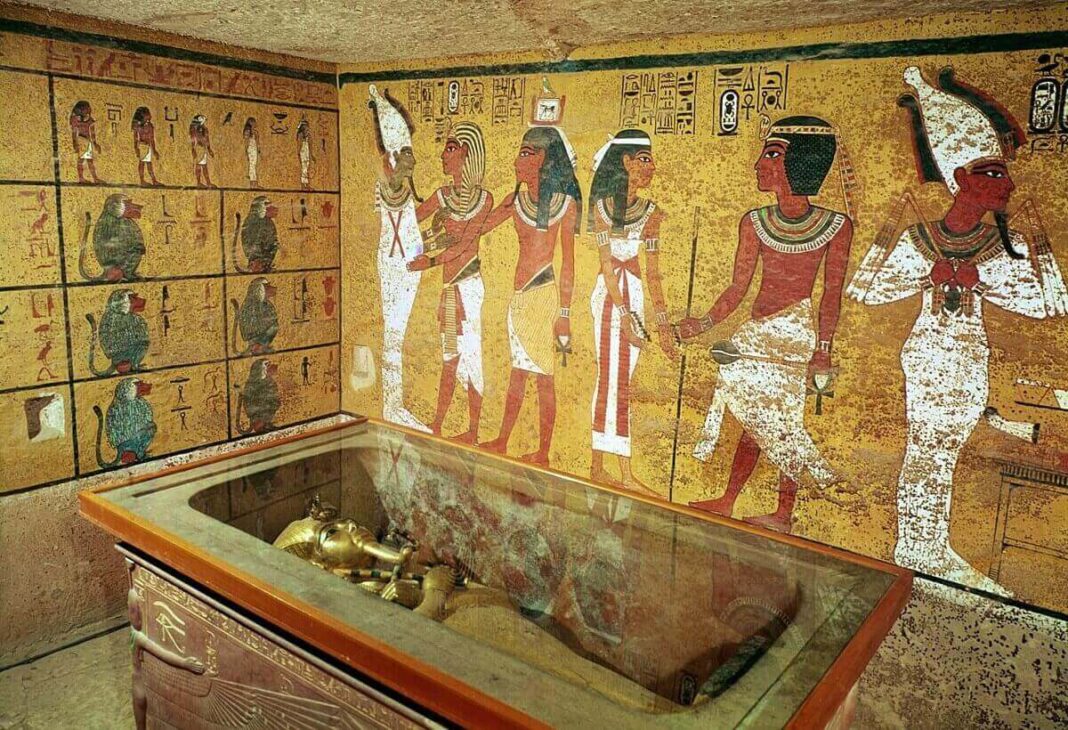Egypt, a land of enigmatic pharaohs, majestic pyramids, and remarkable ancient tombs, has captivated the imagination of historians and travelers for centuries. The country’s tombs, nestled in sprawling deserts and hidden valleys, offer a glimpse into the opulent lives of ancient rulers and their quest for eternal life.
In this article, we will explore the top five ancient tombs in Egypt, delving into their historical significance, architectural marvels, and intriguing discoveries.
1. The Great Pyramid of Giza: The Tomb of Pharaoh Khufu
The Great Pyramid of Giza is an iconic symbol of Egypt and one of the Seven Wonders of the Ancient World. Constructed over 4,500 years ago for Pharaoh Khufu, this massive tomb is a testament to the advanced engineering skills of ancient Egyptians.
Key Highlights:
- Architectural Brilliance: The pyramid originally stood at 146.6 meters (481 feet) and was the tallest man-made structure in the world for over 3,800 years.
- Complex Interior: The Great Pyramid contains intricate passageways and chambers, including the King’s Chamber, which houses a granite sarcophagus.
- Historical Significance: It demonstrates the Egyptians’ sophisticated understanding of mathematics and astronomy.
Visitors today can marvel at the pyramid’s scale and precision, as well as explore the surrounding necropolis, which includes smaller pyramids and the enigmatic Great Sphinx.
2. The Valley of the Kings: Eternal Resting Place of Pharaohs
Located near Luxor, the Valley of the Kings served as the royal burial ground for New Kingdom pharaohs, such as Tutankhamun, Seti I, and Ramses II. This secluded valley boasts over 60 tombs, each uniquely designed and adorned.
Key Highlights:
- Tutankhamun’s Tomb: Discovered by Howard Carter in 1922, this tomb is renowned for its well-preserved treasures, including the golden funerary mask of King Tut.
- Artistic Splendor: The walls of the tombs are adorned with intricate hieroglyphs and vivid depictions of the pharaohs’ journeys to the afterlife.
- Conservation Efforts: Modern techniques are being employed to preserve the valley’s fragile artwork and artifacts.
Exploring the Valley of the Kings offers a profound insight into the spiritual beliefs and burial practices of ancient Egyptians.
3. The Tomb of Queen Nefertari: The Sistine Chapel of Ancient Egypt
Queen Nefertari, the beloved wife of Ramses II, rests in one of the most beautifully decorated tombs in the Valley of the Queens. Known as QV66, this tomb is celebrated for its stunning artistry.
Key Highlights:
- Artistic Masterpiece: The tomb’s walls are adorned with vibrant frescoes depicting Nefertari’s journey through the afterlife, guided by gods like Osiris and Anubis.
- Significance of Inscriptions: Hieroglyphic texts within the tomb provide insights into the queen’s role and status in ancient Egyptian society.
- Restoration Projects: Conservation efforts have been undertaken to preserve the tomb’s delicate artwork for future generations.
The Tomb of Queen Nefertari is a must-visit for those interested in ancient Egyptian art and royal history.
4. The Step Pyramid of Djoser: The First Pyramid
The Step Pyramid of Djoser, located in Saqqara, is the world’s oldest monumental stone structure and the precursor to the more famous pyramids of Giza. Built during the 27th century BCE, this pyramid marked a significant evolution in Egyptian funerary architecture.
Key Highlights:
- Architectural Innovation: Designed by the architect Imhotep, the Step Pyramid consists of six stacked mastabas (rectangular tombs) that form a stepped structure.
- Historical Context: It was constructed as a burial complex for Pharaoh Djoser and includes courtyards, temples, and shrines.
- Archaeological Discoveries: Recent excavations have unearthed artifacts and burial chambers that provide insights into the Old Kingdom.
Visitors to Saqqara can explore the Step Pyramid’s extensive complex and admire its significance as the foundation of pyramid construction in Egypt.
5. The Tombs of the Nobles: Insights into Everyday Life
While the tombs of pharaohs are renowned, the Tombs of the Nobles in Luxor offer a fascinating glimpse into the lives of high-ranking officials, priests, and artisans. These tombs are smaller but equally captivating in their artistry and historical value.
Key Highlights:
- Detailed Wall Paintings: The tombs depict scenes of daily life, such as farming, fishing, and feasting, providing a comprehensive view of ancient Egyptian culture.
- Famous Tombs: Notable tombs include those of Rekhmire, an influential vizier, and Sennefer, known as the “Tomb of the Vineyards” for its unique ceiling decoration.
- Accessibility: Many of these tombs are open to the public and offer an intimate experience compared to larger, more crowded sites.
Exploring the Tombs of the Nobles is a rewarding experience for history enthusiasts seeking to understand the broader societal structure of ancient Egypt.
Explore Ancient Egypt with Experts
Exploring Egypt’s ancient tombs with expert guidance is essential to fully appreciating their magnificence. https://archaeologicalpaths.com offers exclusive tours led by renowned Egyptologists, providing unparalleled access to these historical treasures. This platform ensures an unforgettable journey through Egypt’s rich heritage, from private tours of the Great Pyramid to in-depth explorations of Luxor’s tombs.
Conclusion
The ancient tombs of Egypt are more than mere burial sites; they are monumental achievements that reflect the civilization’s cultural, religious, and architectural prowess. From the grandeur of the Great Pyramid of Giza to the artistic splendor of Queen Nefertari’s tomb, each site tells a unique story of the past. Whether you are a history enthusiast or a casual traveler, these tombs promise a journey through time that will leave you in awe.


